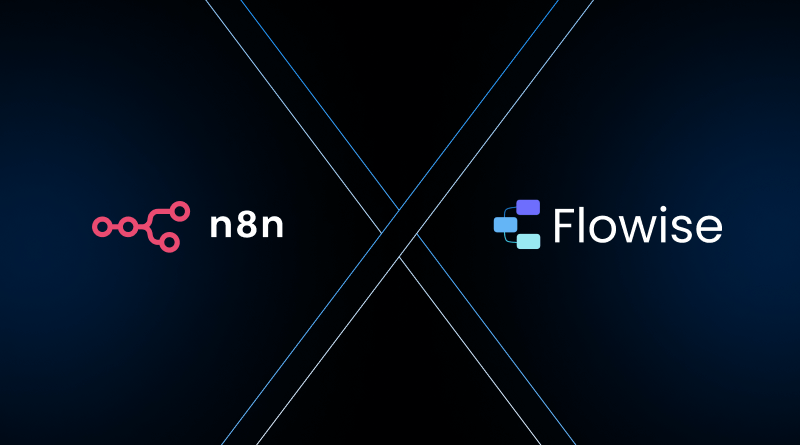Automation isn’t merely a topic of discussion in meetings—it’s about cutting repetitive tasks, freeing up time, and letting the team focus on work that actually matters. The choice of tools can either help us do that or add extra layers of complexity nobody has time for.
n8n and Flowise are widely used automation platforms that streamline workflows, though they take distinctly different approaches. The question isn’t “which is better?”—it’s “which fits the way teams actually work?” Good web hosting makes sure these platforms stay online so workflows keep moving without hiccups. This blog outlines their differences, walks through real scenarios, and delivers practical guidance for choosing the platform that aligns best with your workflows.
Table Of Content
How do n8n and Flowise Differ in Approach?
When you first log into these platforms, the distinction is obvious.
n8n gives you full control over workflows. It’s open-source, self-hosted, and you can adjust settings and customize workflows, but it takes some time to learn. It’s possible to build intricate workflows featuring multiple triggers, loops, and custom logic. For teams that manage data from multiple sources, or who need workflows that aren’t “one size fits all,” it’s powerful. The trade-off? You need someone who can maintain it and troubleshoot issues. This is where the n8n vs Flowise open source comparison becomes interesting.
Flowise takes a different approach. Cloud-based and refined, it’s designed for doing things efficiently. Workflows can be created in minutes with drag-and-drop and pre-created integrations that reduce headaches. It’s easier to learn but less flexible if your process isn’t already covered by its templates.
Think of it this way: n8n is for building a custom engine, while Flowise is more like using a reliable, pre-built tool that just works. This is the core of the Flowise vs n8n distinction.
How Workflows Actually Get Built
This is where design meets execution.
In n8n, each workflow is a sequence of nodes. Each node performs one thing: collect data, send an alert, filter records, or push data to another application. n8n allows complete control over data movement and workflow behavior. This makes it ideal for n8n vs Flowise for AI workflows or n8n vs Flowise for LLM apps, where precision is critical. The catch? The initial couple of workflows felt like learning a new computer programming language.
Flowise, on the other hand, simplifies this. Having a similar workflow—sending weekly reminders to clients—can be established in less than 15 minutes. No coding, minimal thinking about triggers, and the visual interface make everything legible. The catch is that when you want something more bespoke, such as sending varying content based on client segments in a sophisticated manner, Flowise begins to struggle.
The takeaway: n8n demands patience and technical skill, but it handles complexity. Flowise trades some of that control for speed and clarity.
Integrations: More Than Just Connecting Apps
Automation only matters if it actually touches the apps and data used daily.
n8n is powerful in scope. It connects to databases, CRMs, messaging platforms, and even obscure or custom apps. Remember that time when logs needed to be fetched from three internal tools and consolidated into a single report for IT? n8n could handle it with a single workflow, whereas Flowise would have required manual work or splitting the workflow across multiple automations.
Flowise focuses on collaboration tools most teams use: Gmail, Slack, Google Sheets, Trello, and a handful of others. If our workflows stay within this ecosystem, it’s fast, reliable, and easy to maintain. But stretching beyond that may introduce you to its limitations.
So, n8n = power and flexibility for complex, multi-system workflows; Flowise = convenience and speed for everyday processes.
Data Control: Who Holds the Keys?
When teams handle sensitive information, the way data is managed can be a key deciding factor.
When using n8n vs Flowise in a self-hosted setup, n8n keeps all workflow data on internal servers unless it’s intentionally shared elsewhere. Finance, legal, and HR workflows benefit from this. Users can manage permissions, track logs, and implement compliance policies internally. There’s setup—servers require maintenance, SSL certificates need configuration—but the control is worth it for sensitive procedures.
Flowise is fully cloud-based. Setup is simpler, maintenance is negligible, and updates happen automatically. The trade-off? Organizations give up some control over where their data lives. For marketing campaigns, internal notifications, or public-facing automations, this is usually fine. For workflows involving sensitive client or financial data, the convenience must be balanced against security requirements.
Balancing Flexibility and Simplicity
Here’s the truth: every tool is a trade-off.
n8n’s flexibility allows you to create extremely customized workflows, but it can be a nightmare if the workflow is straightforward or the team is not technical.
Flowise’s simplicity makes day-to-day automation hassle-free, but attempts to cram complicated workflows into it tend to result in convoluted workarounds.
Hence, the focus should be on choosing what suits the workflow, not the tool. Marketing automation may excel in Flowise, while data-intensive internal processes are best in n8n.
Support and Community: Where to Turn When Things Break
One of the greatest practical distinctions: how support comes in.
n8n relies heavily on its community. There’s a lot of guidance available—GitHub discussions, user forums, tutorials—but it can require digging, testing, and experimentation. Teams need to be willing to troubleshoot and learn as they go.
Flowise offers organized assistance. Tutorials, live support, and active client support translate to less time spent trying to understand “why this isn’t working.” For teams that lack a technical resource present 24/7, this can be a tremendous timesaver.
Real-Life Workflow Examples
Marketing Team
Flowise: Post blog updates automatically across social channels, update CRM records, and alert stakeholders. Set up minutes; minimal technical expertise required.
n8n: Pulls data from multiple marketing channels, generates leads based on engagement, and automates personalized follow-ups. Setting it up takes time, but it gives precise control over the process.
IT Team
n8n: Track logs on internal servers, raise alerts on inconsistencies, and create reports automatically. Data remains in-house, and processes are completely customizable.
Flowise: Track server uptime and push notifications on downtime. Easy to set up, fine for simple alerts.
Operations Team
Flowise: Let’s teams quickly approve purchases, update shared sheets, and send alerts. It’s simple and readable for everyone, even those without technical skills.
n8n: Handles the whole order process—from checking stock to sending notifications and gathering reports across systems. After the initial setup, it keeps day-to-day tasks mostly hands-off.
Freelancers or Consultants
Flowise: Monitor client deadlines, remind them, and update project trackers. Easy setup and quick output.
n8n: Collects information from multiple clients, organizes it into easy-to-read dashboards, and prepares valuable weekly reports.
These examples show why a “one-size-fits-all” recommendation doesn’t work. Each tool works best in its own set of situations.
Making the Choice
Key factors when comparing n8n vs Flowise pricing and usability:
- What’s our technical capability? Does the team have someone capable of handling n8n’s complexity, or is Flowise’s simplicity more suitable?
- How complicated are our workflows? Multi-step, data-heavy workflows benefit from n8n. Simple, repetitive processes fit Flowise.
- What’s the data sensitivity? Critical internal data may need self-hosting, pointing toward n8n. Public or low-risk workflows are fine in Flowise.
- How quickly are results needed? Quick deployment favors Flowise; investing time for precision favors n8n.
- What’s the learning curve the team can realistically handle? Some workflows justify learning n8n; others don’t.
By walking through actual workflows, the team can decide on a case-by-case basis. Some teams even end up using both: Flowise for standard tasks, n8n for complex pipelines.
Ultimately, automation should simplify work rather than add extra steps. n8n and Flowise both do this—but in very different ways.
n8n is for control, customization, and management of advanced workflows. It’s best for groups that can dedicate time to setup and upkeep.
Flowise is for speed, simplicity, and shared accessibility. It’s best for tasks that must be automated now with minimal technical intervention.
The best approach? Look at the workflows handled daily, match the tool to the process, and avoid forcing a single platform to cover everything. When used mindfully, either platform will save hours, cut down on errors, and boost efficiency—but only if it truly fits the way the team works.
Automation isn’t a ‘set it and forget it’ solution. It’s a living part of how work gets done, and the right tool depends on workflow complexity and how much control we need. Pick wisely, and the time saved pays off in actual productivity rather than mere planning.
FAQs
1. How does the open-source nature of both platforms affect their use and community?
Open-source just means you can run it yourself and change stuff if needed. The community shares tips, but you won’t have someone holding your hand. If something breaks, you figure it out or search forums.
2. Is Flowise a good solution for general workflow automation, like syncing data between apps?
Yes, it works fine for standard stuff—moving information between apps, sending alerts, or running repeatable tasks. It’s simple to set up and doesn’t take long. Complex workflows or things that need multiple conditions can be tricky. You might have to split them up or find workarounds.
3. Which tool should a business choose if their main goal is to automate internal business processes?
If the processes are simple, Flowise does the job quickly. Copying info, sending reminders, or updating basic stuff is easy. If it’s a bit messy—lots of steps, checks, or special rules—n8n makes more sense. It’s heavier to set up, and you need to watch it, but it handles complicated tasks better.
4. What is the learning curve for someone who is new to AI and automation?
Flowise is easy. Drag, drop, done. You see what’s connected, and it works. n8n takes more time. You have to figure out how nodes and triggers link together. Sometimes things don’t run right, and you have to fix it. You learn as you go, not instantly.















